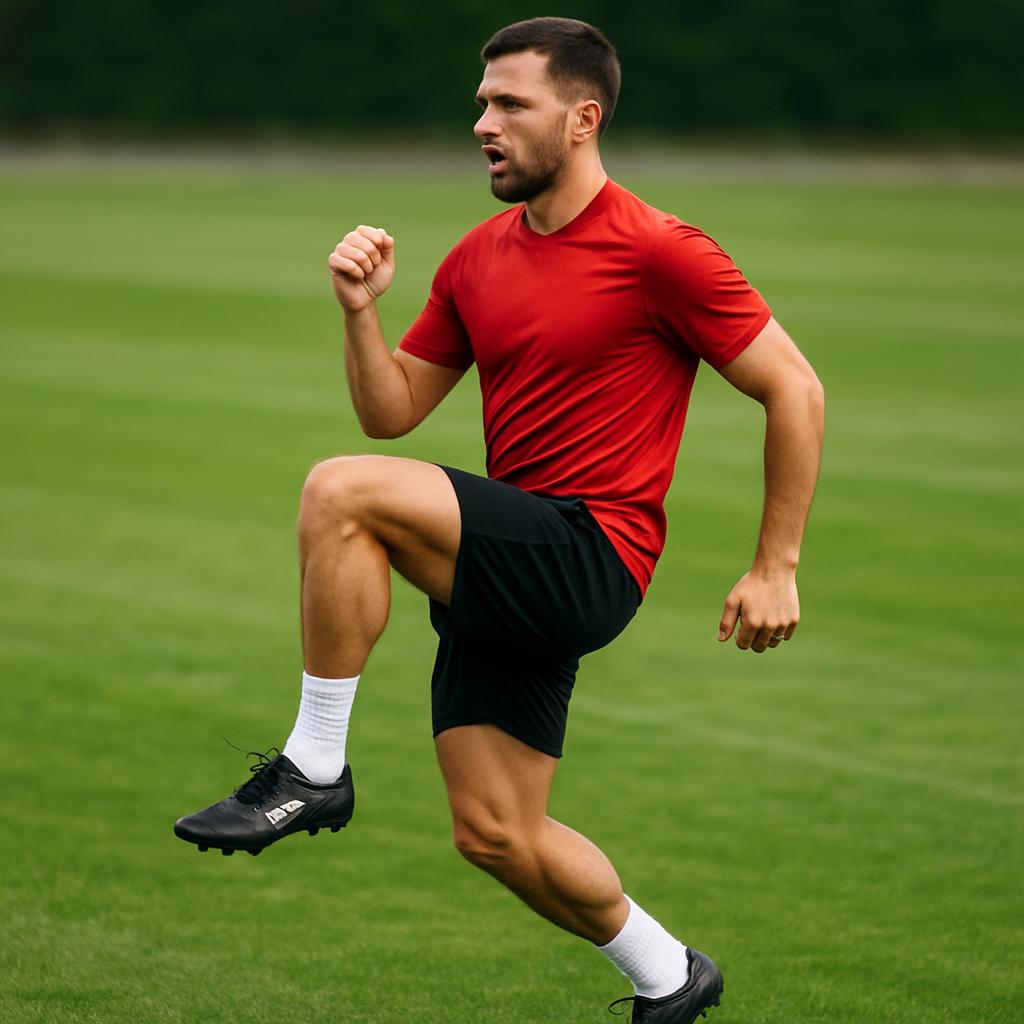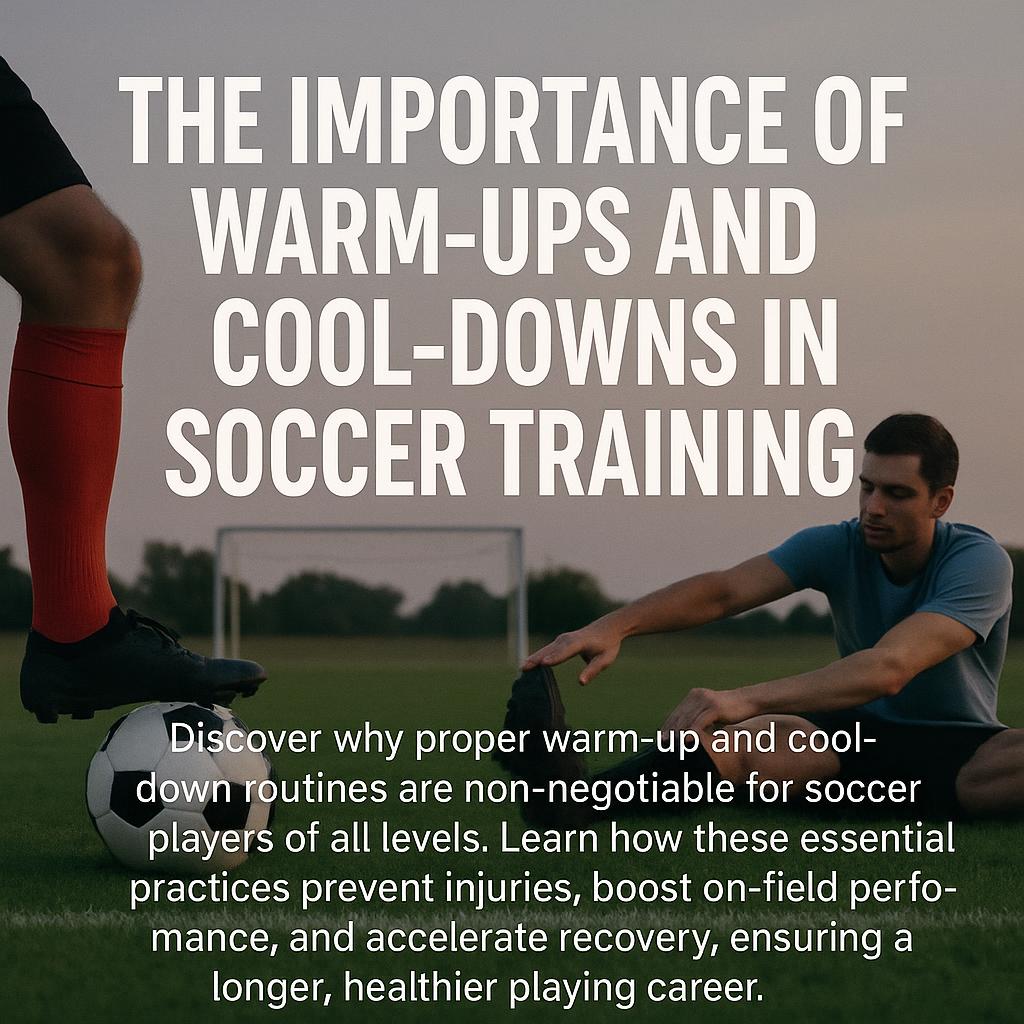In the fast paced world of soccer, explosive sprints, sharp turns, and powerful kicks define every match. Preparing your body isn't just an option; it's absolutely vital. Many players, from eager newbies to seasoned pros, might feel like jumping straight into the action. But skipping proper warm ups and cool downs? That’s a huge gamble. These aren't just pre and post game rituals. They're core parts of any player's training, essential for preventing injuries, boosting performance, and truly recovering muscles.
Really understanding and using these routines can make a massive difference in how long a player stays in the game and how well they perform. Let's dive into why these often overlooked parts of training are so crucial for every soccer player, no matter their age.
The Critical Role of Warm Ups in Soccer
Think of a warm up as gently easing your body into gear, getting it primed for serious physical effort. It’s like softly waking up your muscles and heart, rather than just jolting them. Studies consistently show that a good warm up is absolutely necessary for any athlete, especially in a dynamic sport like soccer. It’s not simply about breaking a sweat. It’s about getting your whole body’s system ready to roll.
The physiological benefits of a proper warm up are extensive. First off, blood flow to your muscles really picks up. For example, your muscles need fuel and oxygen, just like engines, and better blood flow delivers these more efficiently. This also warms your muscles. That’s crucial because warmer muscles stretch better and are less likely to tear. This extra elasticity directly helps cut down on muscle stiffness and makes you more flexible. So, movements feel smoother and take less effort.
Plus, warming up strengthens the connection between your nerves and muscles. That means your brain and body communicate better, leading to improved coordination and faster reactions on the field. Your heart rate and breathing gradually increase, preparing your heart and lungs for the game's demands. What’s more, warm ups help lubricate your joints. This ensures your knees, ankles, and hips move freely with less friction. That’s critical for avoiding injuries during all those quick, dynamic moves.
Beyond the physical side, warm ups bring some serious mental perks too. They give players a dedicated moment to really focus and concentrate on what’s ahead, whether it’s practice or a game. This mental prep helps athletes shift from daily life to soccer’s high intensity, sharpening their awareness and strategic thinking. It helps players mentally rehearse movements and tactics. This gets them into the right mindset to perform optimally.
For injury prevention, warm ups are literally a player’s first line of defense. When muscles are more pliable and joints are more fluid, the risk of common soccer injuries like strains, pulls, and tears drops significantly. Experts say that using dynamic stretches, which involve movement, rather than static stretches (holding a position), is key before a game.
Consider light cardio like a gentle jog, then move into dynamic stretches. Think about stuff like walking lunges, high knees, butt kicks, leg swings, and arm circles. These movements actually mimic what you’ll do in the game. They get the specific muscle groups that will be working hard ready to go.

Warm ups also directly boost performance. With muscles warmed up and systems primed, players show better agility, speed, and power. Their range of motion expands, letting them make bigger movements like deeper squats or longer strides. Better reaction time means players can react faster to the ball, opponents, and game situations. That gives them a critical edge. A body that’s ready simply performs better. Players can execute skills with more precision and confidence throughout the game.
The Often Overlooked Importance of Cool Downs
Warm ups get your body roaring, but cool downs gently bring it back down to a resting state. This phase is just as crucial as the warm up. Yet, it often gets skipped or rushed. A proper cool down isn’t just about chilling out; it’s a vital step for recovery and maintaining athletic health for the long haul.
The physiological benefits of cooling down are vital for recovering after exertion. It helps your heart rate and breathing gradually drop, letting your cardiovascular system get back to normal without a sudden shock. Crucially, cool downs help your body clear out metabolic waste like lactic acid. That’s the stuff that builds up during intense exercise. Getting rid of these byproducts can really cut down on muscle soreness. You know, that Delayed Onset Muscle Soreness (DOMS) that kicks in a day or two after a tough session.
What’s more, static stretching during the cool down helps muscles get back to their normal length. It can even boost long term flexibility, fighting off that muscle shortening intense exercise can cause.
As for injury prevention, cool downs really help by stopping blood from pooling in your arms and legs. That pooling can lead to dizziness or even fainting. By slowly winding down activity, blood flow normalizes, making for a smoother transition to rest. It also helps ease that stiffness after exercise, encouraging better mobility for your next training session or just daily life. Avoiding this stiffness means you’re less likely to make awkward, compensating movements that could strain other parts of your body.
Cool downs are also major recovery boosters. By getting blood flowing and muscles relaxing, they help repair those tiny muscle tears that happen during intense workouts. This restorative process is vital for muscles to adapt and grow. It also gets your body better prepared for the next training session or game. A body that recovers well will consistently perform better and improve over time.
A typical cool down involves light cardio like a slow jog or walk for 5 to 10 minutes, then into static stretches. Static stretches mean holding a stretch for 20 to 30 seconds. Focus on the major muscle groups used heavily in soccer: hamstrings, quadriceps, calves, hip flexors, and groin muscles. Remember, static stretching works best when your muscles are already warm, so the cool down is perfect for it.

Tailoring Routines for Different Age Groups
The core ideas behind warm ups and cool downs stay the same for everyone. But how you do them, and how intense they are, should really match a player’s age and physical ability.
For younger players, the key is making these routines fun and engaging. Warm ups can include games that get them doing light running and basic movements. Keep them shorter, maybe 5 to 10 minutes for each part. The focus here is on building fundamental movement skills and body awareness. These are critical for long term athletic growth. Preventing injuries is incredibly important for growing bodies, since their bones and muscles are still developing. They’re more prone to certain kinds of injuries. Simple dynamic movements and gentle static stretches are the best fit.
Adult players can handle more intense, sport specific warm ups and cool downs. Their routines might be longer. Think 15 to 20 minutes for warm ups and 10 to 15 minutes for cool downs. Coaches often customize routines to tackle specific muscle imbalances, past injuries, or the demands of a particular position. Here, the goal is keeping flexibility, mobility, and strength up. This helps sustain performance and prevent the physical decline that comes with age.
For professional athletes, warm ups and cool downs are usually highly customized and deeply rooted in sports science. These routines might use advanced techniques, specialized gear, and detailed physiological monitoring. Recovery protocols, especially in the cool down, can involve ice baths, foam rolling, massage, and cryotherapy. All of it is designed to optimize recovery and get the body ready for that next high level performance.
Integrating Technology for Better Training
Getting warm up and cool down routines across to a team, especially visually and engagingly, can be a real headache for coaches. That’s where modern tech can really step in and help. Being able to show complex dynamic stretches or specific cool down postures with total clarity and consistency, making sure every player grasps the movement and why they’re doing it, is truly transformative.
This is exactly where tools like the SPLY app shine. SPLY, available on iOS, is a video soccer coach board that makes sharing drills and tactics with your team incredibly simple. Coaches can use its features to really level up their warm up and cool down instructions. For example, you can use the board editor to design specific warm up sequences, mapping out the progression of dynamic movements.
Then, you can export to image these boards. Players get a visual reference they can look at anytime. The most powerful feature, though, is the ability to create a video. Your face and voice get added right to the board video while you’re drawing or moving things around. This lets coaches demonstrate each stretch or movement in real time on the digital board. They can provide detailed verbal cues and visual guidance. This means consistent instruction for everyone on the team. Complex movements become easy to grasp, and players truly internalize the correct technique. Ultimately, it leads to better compliance and safer execution of these vital routines.
The Long Term Benefits: A Holistic Approach
Sticking to warm ups and cool downs isn’t just about quick wins. It’s about laying down a solid foundation for a healthy, long lasting soccer career. Players who consistently do these routines typically spend less time sidelined with injuries. This lets them participate more regularly in training and matches. That consistency directly means better overall performance. Your body stays primed and ready for action.
Off the pitch, these practices contribute to better overall physical health. They also build a culture of self care and body awareness among athletes. It’s about taking a holistic view of athletic development, understanding that preparation and recovery are just as crucial as the game itself.
So, to wrap things up, warm up and cool down routines are absolutely essential parts of soccer training. They’re not just optional extras. They’re critical components that greatly help with injury prevention, performance enhancement, and efficient muscle recovery. By getting the body ready before exertion and gently bringing it back down afterwards, players of all ages can lower risks, maximize their on field potential, and keep playing the beautiful game longer. Coaches and players should both make these routines a priority. They can use tools like the SPLY app to make sure they’re implemented consistently and effectively. Make warm ups and cool downs a non negotiable part of your soccer journey. Your body and your performance will definitely thank you for it.
